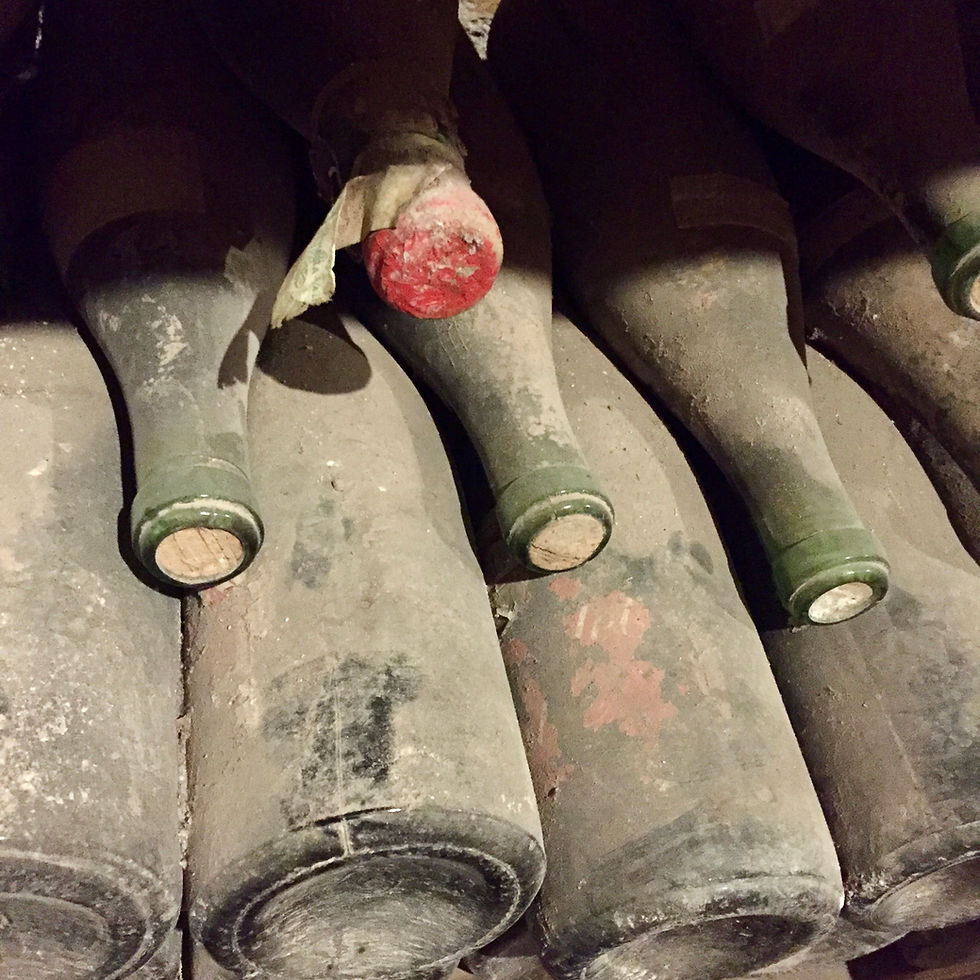A Meeting of Minds: Salcombe Distillery Gin and Château Climens Sauternes
- Joanna Simon

- Dec 8, 2020
- 4 min read
Updated: Jan 10, 2021

When gin distiller Angus Lugsdin was visiting Château Climens in Barsac for the first time, the fog was so thick he couldn’t find it. Suddenly it emerged out of the fog like a phantom. Later, when he was naming his new gin, the sixth and latest in Salcombe Distilling Company’s limited-edition Voyager Series, each named after a nineteenth-century Salcombe fruiter (fruit schooner), Phantom seemed the obvious fruiter to choose.
Obvious because Phantom was created in collaboration with Château Climens – hence his visit to the estate – and the morning fogs, or mists, are what make Barsac and Sauternes the sweet wines that they are. They creep through the vineyards promoting botrytis cinerea, the noble rot that shrivels the Semillon grapes so unenticingly but so vitally for producing these great sweet wines.
It came about because the Voyager Series is a collection of gins developed with celebrated chefs and winemakers, enabling Angus, as he puts it, to indulge his passion for food and wine. Sauternes arose as a possibility simply because he had “always had a sweet tooth for Sauternes” and thought that it could complement Salcombe gin. He mentioned the idea to wine merchant Tim French of Thorman Hunt who said the Sauternes had to be Château Climens, a Premier Cru renowned for its precision, elegance and longevity. It's also biodynamic.
Angus approached Climen’s owner Bérénice Lurton and although she wasn’t a gin drinker (at the time) she loved the concept. As he describes it, the idea was “to mimic some of the softer, more nuanced flavours in Berenice’s wines, while still creating a gin led by juniper”. In Bérénice’s words: “It was like creating perfume. It’s so much more than finishing some gin in Sauternes barrels.”
So much more because Phantom is not only cask-finished for eight months in casks that previously aged Château Climens, but the botanicals were specially sought out by Angus, Bérénice and head winemaker Frédéric Nivelle to evoke flavours of Climens and its terroir. Seven of the 16 come from the estate itself: marigold flowers, bay leaf, savory, cypress, fennel, nettles and rose petals growing in and around the vineyards. These are matched to traditional gin botanicals, including Macedonian juniper, coriander seed (grown in Essex), orange peel and orris root, together with lavender, orange blossom and apricots.
The next step was to select the six casks needed to produce the limited edition of 3,500 half-litre bottles. Bérénice felt that 2016 and 2015 would be the right kind of vintages: “I thought young vintages where they’re subtle and you still have aromas of flowers and herbs – fresh and dry – and you still have the backbone and finesse of Climens.”
The casks, made from fine-grained oak sustainably sourced from France’s Bertranges forest, were hand-picked by Angus and Frédéric Nivelle “for their sweet perfumed residual aromas”. Five had been used to age wine from the 2016 vintage and one had held the 2015 vintage. Both 2016 and 2015 Château Climens are Sauternes of exceptional purity, energy and harmony: the 2015 is slightly rounder and more floral, with orange blossom, honey, cantaloupe melon, buttery ginger biscuits and a mineral streak; the 2016 has a little more power and citrus intensity, with candied orange and grapefruit peel, stem ginger, apricot and, again, the mineral seam.
Bérénice shipped the casks to the distillery in Salcombe, South Devon – as it happens, one of only a handful of distilleries in the world that you can access directly by boat. There, Phantom was distilled by the precise one-shot method in the company’s specially commissioned 450-litre copper pot still and was then blended with Dartmoor’s naturally soft water. The casks were filled in February 2020 and after eight months they were blended together and reduced in strength to 46% with Dartmoor water. A small amount of acacia honey was added to echo notes in the wine and add richness to the mouthfeel.
“We wanted to get some richness, apricots, spices, toasted oak, a level of sweetness. We wanted it to work as a digestif over ice (one big ice cube) and with tonic* and in a Martini. A bad gin can’t hide in a Martini,” Angus explains. They also wanted a fresh green note, which the fennel imparts, and some of Climen’s floral identity, precision and minerality. Bérénice says that Climens, which lies on limestone topped by a thin layer of iron-rich, clayey sand red soils, has a minerality and a particular saltiness.
For a Sauternes-loving gin drinker it sounds like the best of both worlds, but does it work? It does. No question. It’s a beautifully complex, very pale gold gin with great finesse and clarity of flavour, a soft texture, floral aromas (including orange blossom and rose), fresh and spicy green notes of cypress and herbs, orange peel, cantaloupe melon and a whisper of honey.
*Angus Lugsdin recommends Fever Tree tonic and a twist of flamed orange peel.
If you’re thinking of Christmas presents, Salcombe Gin Voyager Series Phantom looks the part in a white glass bottle with copper stopper in an embossed drawer-style box.
£75 (50cl), salcombegin.com, Salcombe Gin Distillery, Flagship Wines, Master of Malt
Photograph by Joanna Simon





Comentarios